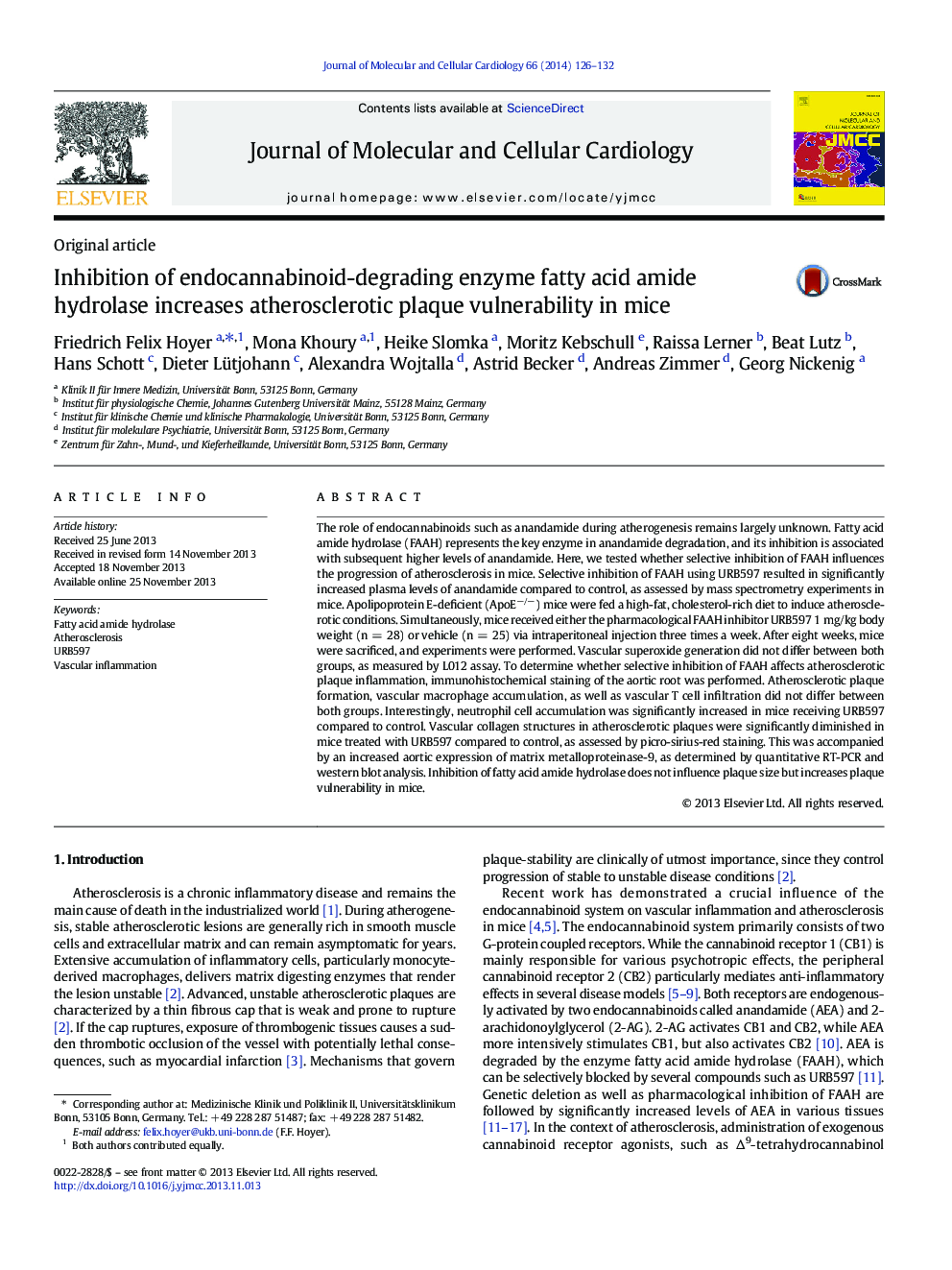| Article ID | Journal | Published Year | Pages | File Type |
|---|---|---|---|---|
| 2190558 | Journal of Molecular and Cellular Cardiology | 2014 | 7 Pages |
•We have assessed the role of fatty acid amide hydrolase during atherogenesis in mice.•FAAH inhibition increases neutrophil accumulation in atherosclerotic lesions.•FAAH inhibition impairs vascular collagen structures in atherosclerotic lesions.•This is accompanied by increased aortic expression of matrix metalloproteinase-9.•Inhibition of FAAH increases atherosclerotic plaque vulnerability in mice.
The role of endocannabinoids such as anandamide during atherogenesis remains largely unknown. Fatty acid amide hydrolase (FAAH) represents the key enzyme in anandamide degradation, and its inhibition is associated with subsequent higher levels of anandamide. Here, we tested whether selective inhibition of FAAH influences the progression of atherosclerosis in mice. Selective inhibition of FAAH using URB597 resulted in significantly increased plasma levels of anandamide compared to control, as assessed by mass spectrometry experiments in mice. Apolipoprotein E-deficient (ApoE−/−) mice were fed a high-fat, cholesterol-rich diet to induce atherosclerotic conditions. Simultaneously, mice received either the pharmacological FAAH inhibitor URB597 1 mg/kg body weight (n = 28) or vehicle (n = 25) via intraperitoneal injection three times a week. After eight weeks, mice were sacrificed, and experiments were performed. Vascular superoxide generation did not differ between both groups, as measured by L012 assay. To determine whether selective inhibition of FAAH affects atherosclerotic plaque inflammation, immunohistochemical staining of the aortic root was performed. Atherosclerotic plaque formation, vascular macrophage accumulation, as well as vascular T cell infiltration did not differ between both groups. Interestingly, neutrophil cell accumulation was significantly increased in mice receiving URB597 compared to control. Vascular collagen structures in atherosclerotic plaques were significantly diminished in mice treated with URB597 compared to control, as assessed by picro-sirius-red staining. This was accompanied by an increased aortic expression of matrix metalloproteinase-9, as determined by quantitative RT-PCR and western blot analysis. Inhibition of fatty acid amide hydrolase does not influence plaque size but increases plaque vulnerability in mice.
